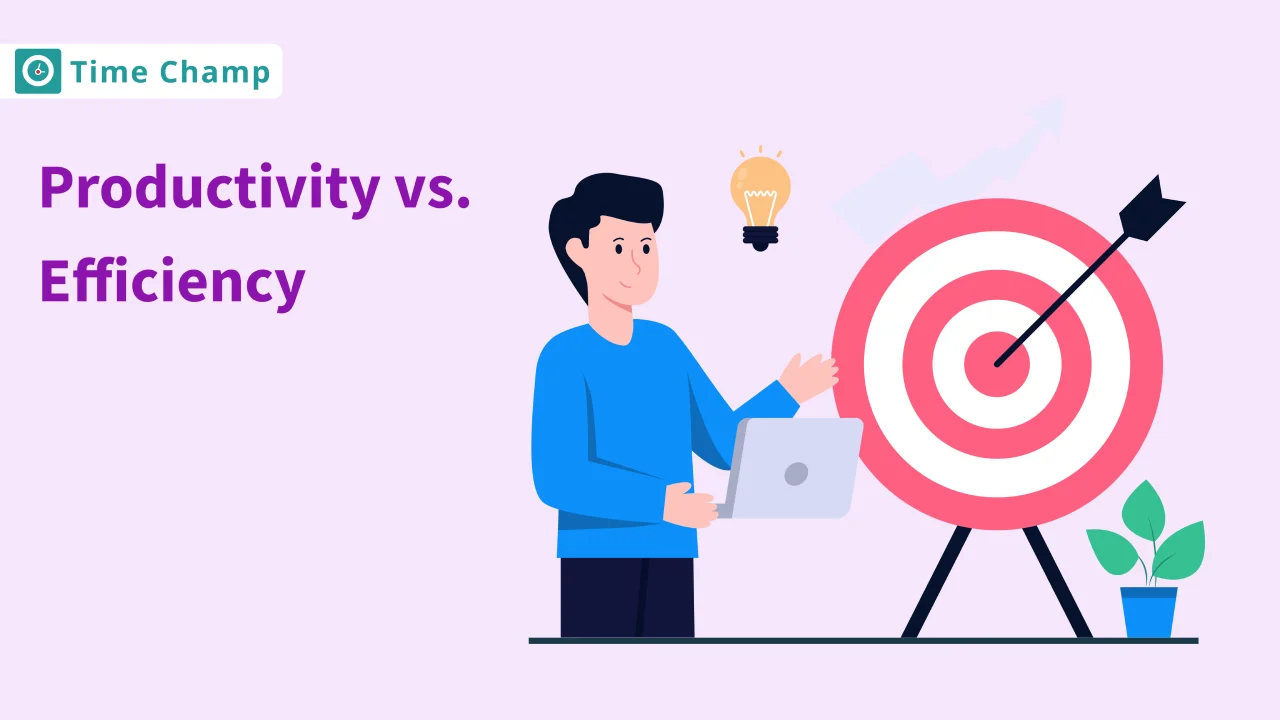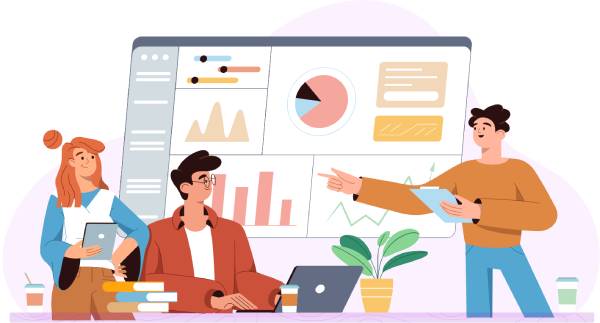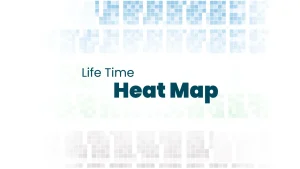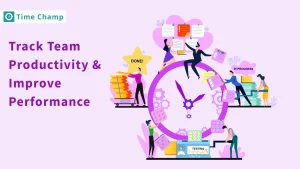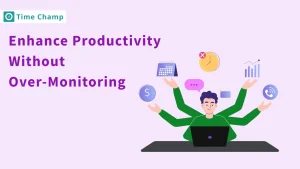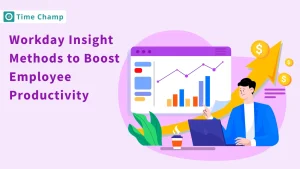Regarding the improvement of work quality, people tend to think that productivity and efficiency are two aspects of the same thing. It becomes confusing when people fail to grasp that they are two distinct entities. Productivity and efficiency are two terms that are often used interchangeably but are not the same.
This is why it is important to distinguish between Productivity vs. Efficiency so that one can work better.
What are the impacts of daily activities on Productivity and Efficiency? It’s time to brainstorm together and find out how to make our days more productive!
Understanding Productivity
Productivity is the quantity of work that is produced in a particular period. It measures the extent of work accomplished, i.e. the number of units of output, activities performed, or objectives met. For instance, if Employee A produces 10 units in an hour, then he or she is more productive than Employee B who produces 8 units in the same hour.
Understanding Efficiency
Efficiency can be described as the extent to which resources are used to accomplish a given task. It aims at using the least amount of resources possible and the time taken to complete a given task. For example, if Employee A and Employee B work for an hour and type the same amount of text, but Employee A does it with fewer errors and uses less paper, then Employee A is more efficient.
Boost productivity and efficiency effortlessly—track time, optimize workflows, and maximize performance with Time Champ!
Signup for FreeBook DemoPractices to Estimate Productivity and Efficiency
To measure productivity and efficiency, key performance indicators such as output per hours worked or resources used.
1. Calculate Productivity
Productivity is the amount of output that is achieved in a given time frame, which is time, resources, or manpower.
Here’s the formula to calculate productivity.
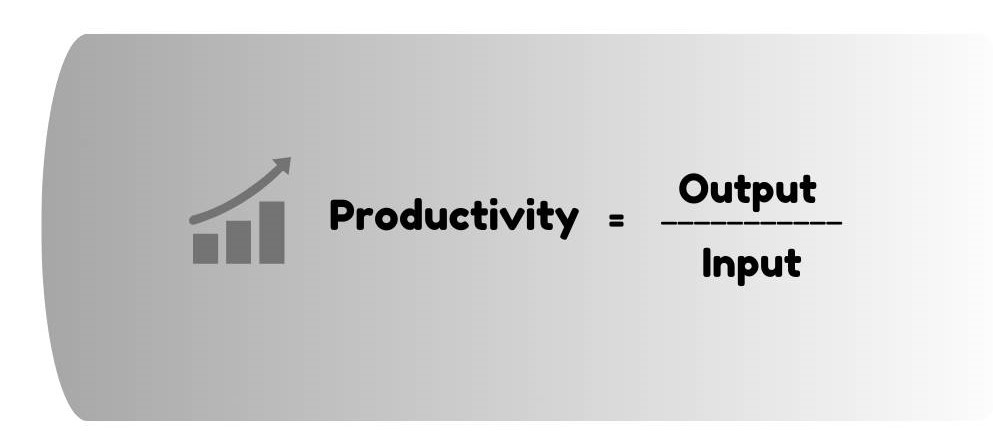
2. Calculate Efficiency
Efficiency can be defined as the ability to measure the extent to which resources have been utilized to achieve specific goals. Here’s the formula to calculate efficiency.
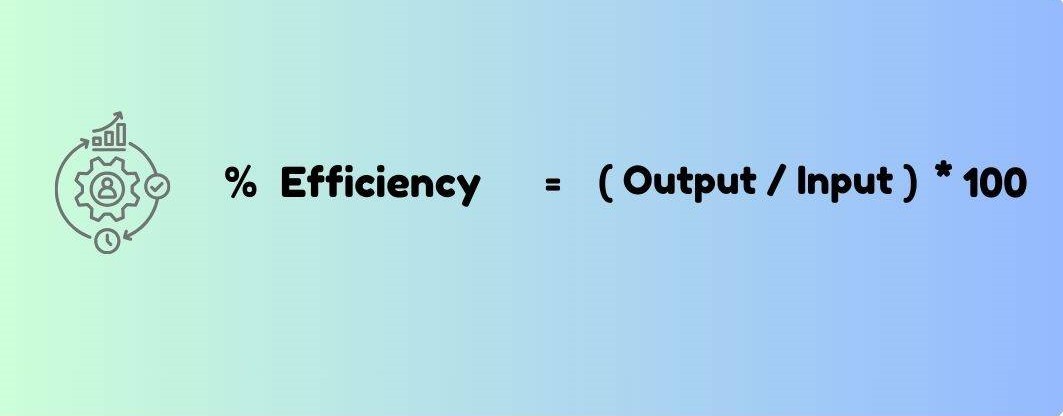
Productivity vs. Efficiency Key Differences
Productivity and Efficiency are often seen as two sides of the same coin, but in fact, they have different meanings in terms of overall performance. This is a summary to give you a clear picture of the productivity vs. efficiency and differences between them.
| Category | Productivity | Efficiency |
|---|---|---|
| Definition | Measures how much output is produced using available resources. | Efficiency is the ability to achieve maximum output with minimum wasted resources, time, or effort. |
| Focus | Getting more tasks done in less time. | Completing tasks with minimal waste of time and effort. |
| Example | A sales team making 100 calls per day to generate more leads. | A sales team making 50 targeted calls that result in a higher conversion rate, optimizing time and resources. |
| Impact on Business | Higher productivity increases output and revenue. | Higher efficiency reduces costs and improves quality. |
What Are the Best Strategies to Increase Workplace Productivity?

It is necessary to discuss some recommendations for the increase in productivity. These techniques will help in enhancing productivity.
1. Setting Priorities
Start by identifying which of the tasks are crucial. These are the ones that will help employees in achieving their dreams and goals at work. These are the tasks to focus on first. Some are strategic because they align with organizational objectives and plans, while others are emergent due to time constraints or other factors. To do this, prioritize the tasks by their importance and the time that is required to complete them.
2. Grouping Tasks
When there are several related tasks to accomplish, it is advisable to cluster them. This is time-saving and enables more to get done. This leads to increased productivity in the long run.
3. Take Breaks
Do not forget to allow breaks and have some rest during the day. It is important to schedule breaks not only to avoid getting tired but also to work harder and better. This is the best time to engage in some form of exercise such as stretching, deep breathing exercises, or even a short walk.
What Are the Best Strategies to Improve Workplace Efficiency?
Below are some strategies that will assist you in improving efficiency.
1. Clear Procedures
Standard operating procedures include preparing written documents that describe how to perform all activities in a business. This makes it easier for everyone in the company to work at the same time and come up with the same solutions.
2. Make Tasks Easier
Elimination of unnecessary steps is a little time-consuming but it makes things work better. This not only makes the work faster but also makes the work of better quality. This way, we can save time and be more effective in doing more useful things.
3. Setting Achievable Goals
Setting achievable goals helps employees to walk in the right direction and ensures that they remain focused and motivated at the same time. When they have goals that are realistic and meaningful, it becomes easier to prioritize tasks. This helps in handling matters of concern while ensuring that everyone is on the right track.
Mastering the Balance
In any workplace, achieving success is a matter of achieving a fine balance between productivity and efficiency. Productivity is about maximizing output whereas efficiency is about using resources well without wasting them. The right balance between the two brings about sustainable growth, improved performance, and a healthier work environment. Below are some important strategies to increase productivity while maintaining efficiency in the long run.
1. Establish goals
Productivity goals are set in terms of the amount of work or products to be completed within a given period. It is all about how to get the maximum out of the available resources such as materials, manpower, and time.
Efficient goals are aimed at reducing waste in activities, resources, and energy. This involves setting specific objectives to reduce operational costs while maintaining quality and productivity.
2. Keep Track of Progress
It is also important to monitor the progress and ensure that the employees are utilizing their time and resources efficiently. Check the areas to see where they could improve. This way, you can determine what is effective and what is not when it comes to productivity and efficiency.
3. Keep a Balance Between Productivity and Efficiency
In order to keep things in balance, concentrate on establishing proper priorities and simplifying the workflow without overworking the team. Automate the repetitive tasks and provide the appropriate tools to be used for smart work. While doing this, also set realistic productivity targets that do not compromise quality.
Review performance data on a regular basis to see what can be improved in productivity without causing undue stress. The most important thing is to create a work culture where output and resource optimization are valued, so that your team stays motivated and efficient in the long run.
Moving Forward: Practical Tips for Better Performance
To increase productivity and efficiency in your team or organization, you need to consider some techniques like effective time management, developing skills, and using the right tools. In this post, let’s discuss practical tips on how you can achieve this.
1. Manage Time Well to Get More Done
Using time wisely is one of the great ways to increase productivity. First, make a list of tasks in order of importance and then make realistic deadlines. Break down large tasks into smaller tasks, so your employees find them easier to handle. Additionally, minimize distractions and make an effort to set aside the time to work in focus. When you and your team use time wisely, there is less of a mess, and tasks are completed faster without much stress.
2. Improve Skills to Work More Efficiently
The skills of your team determine how well they perform their tasks. Provide them with training and learning opportunities so that they can always keep on improving. Skill development helps members of your team to work more efficiently by learning new software, improving communication, and quickly solving issues. When people know how to do their job then the more tasks they get done in a shorter period and with fewer mistakes, which means better results.
3. Use the Right Tools to Make Work Easier
Utilize tools that will make the tasks of your team easier and well-organized. From project management software to communication apps, the right technology can improve workflow and save time from repetitive work. For example, task management tools help track the progress, remind them when a task needs to be completed, and collaborate easily. Using the right tools simplifies tasks for your team, gets more done, and helps focus on what matters—producing great results.
Work smarter, not harder—boost efficiency, reduce wasted time, and drive productivity with Time Champ!
Signup for FreeBook DemoTime Champ: The Key to Productivity and Efficiency
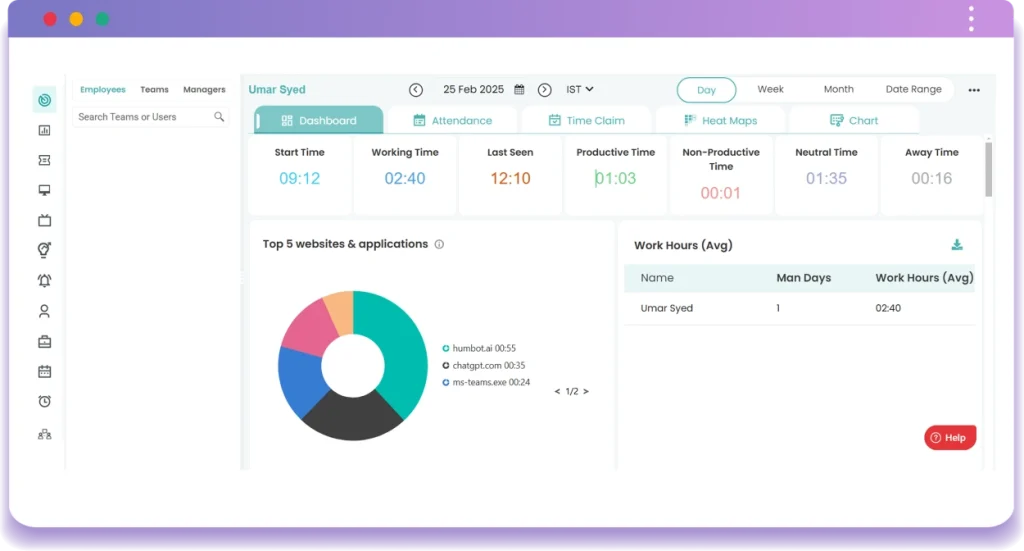
Time Champ is a smart time tracking and productivity tool for businesses to maximize every work hour. It provides live insights into time spent, and you can track tasks, monitor employee’s activities, and eliminate time-wasting habits. It has advanced project and task management features to assign tasks, set deadlines, and track in real time. This helps in maintaining employees on schedule, thereby minimizing delays and increasing overall productivity.
Website and application tracking, automated timesheets, and detailed reports will help you identify productivity gaps and take action to improve focus and efficiency. Task-based tracking provides insights on how much time you actually spent on each project, helping you deploy the right resources and make sure essential tasks get accomplished. By linking task management with time tracking, Time Champ helps pinpoint inefficiencies, reallocates work, and prevents burnout.
When it comes to efficiency, Time Champ reduces manual efforts and keeps distractions away. This helps you control the access to the website, monitor screen activity, as well as analyze task completion rates and ensure that work is done faster without compromising quality. Time Champ pinpoints bottlenecks and optimizes workload distribution to keep your team engaged and complete tasks with better speed and accuracy, which in turn improves overall business performance.
Conclusion
Understanding the difference between productivity and efficiency (productivity vs. efficiency) helps you develop a workplace where tasks are done faster without wasting resources. When you achieve a balance between both, your team will produce more, while maintaining the quality without compromising. Set clear goals, measure the progress of your team, and provide the right tools and better training to keep everyone on track and motivated. By making simple changes like great time management and removing the steps that are not necessary. By continuing to improve, you will get better results in performance as well as job satisfaction.
Frequently Asked Questions
It is important to understand both concepts help people to achieve the best outcomes and complete work effectively. Productivity means getting more out of the resources that have been put into use while efficiency means doing things in the best way possible and in the shortest time possible without wasting resources. Both are possible to master to achieve the best outcomes and to avoid wasting resources.
To increase workplace productivity daily, one should begin with setting goals and objectives and work on the most important tasks. When similar activities are grouped, the time taken to transition from one activity to another is reduced. Also, it is possible to take short breaks in between the days to give the mind some rest while keeping high levels of focus and energy.
Yes, productivity and efficiency are related and it is possible to enhance both in the workplace. By making tasks easier and using resources better, you can do more work (productivity) and do it with less time and energy (efficiency). Improvements in one area may lead to improvements in the other, thus making the overall performance better.
Boost productivity with these straightforward methods: organize work, establish time frames, reduce interferences, apply tools, distribute work, group similar tasks, and rest.
